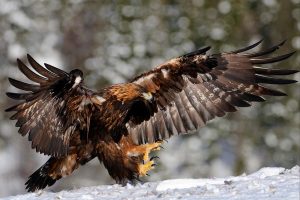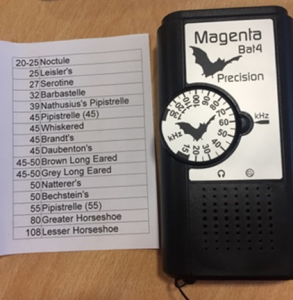Planet Earth 2 – Episode 2 (Mountains) – Michael McCoy
Planet Earth 2 – Episode 2 (Mountains)
Guest Blog by: Michael McCoy
In the second episode of Planet Earth II, the main focus was on the adaptations of animals to mountain ranges. With high altitudes the air is very thin and therefore would be difficult to breathe. However, nature always finds a way with many species adapting both physically and behaviourally to some of the most hostile environments in the world.
In the Arabian peninsula, you can find some of the steepest mountain ranges around. One particular species has used this environment to their advantage. The Nubian Ibex, a type of mountain goat, have adapted to the harsh conditions by having small nimble feet, allowing them to be excellent climbers while also providing them with the ability to walk on very thin cliffsides. As there are many predators on ground level, the Ibex raise their young near the top of the mountains. Unfortunately, there is never any standing water available due to the high gradient. Therefore, the mountain goat must make their way down to level ground to drink and this can make them vulnerable to predators. The Ibex moves in herds and if a predator is identified the species scatter back up the mountain to both evade and confuse the impending threat. Humans have been able to adapt to steep mountainous terrain by the use of climbing gear. We use ropes to be able to pull ourselves upwards. Instead of continuously moving up and down a mountain for water like the Ibex, humans have created containers to hold large amounts of water to be stored and so descend further down less frequently if living in mountainsides.
In Europe, the biggest mountain range is the Alps. This mountainside is covered in snow due to a lack of heat at higher altitudes. One species that has greatly adapted to these extreme weather conditions is the Golden Eagle. These majestic birds soar high in the sky with little effort due to their large wingspan. The Golden Eagle has eyes that can see up to 2 miles away which is helpful for foraging for food. Due to limited resources, the eagles mostly rely on carcasses and will fight each other for food. Only the most competitive individuals will survive. Humans can not see as far as the golden eagles and so have invented telescopes and binoculars to observe from a distance. Humans forage for food together instead of competing against each other to help as many survive as possible in the harsh conditions of the mountain.
Grizzly bears reside in the avalanche prone mountains of the Rockies in North America. They have thick winter coats to keep warm and hibernate in caves when food is in low supply. In springtime, the bears emerge along with newly born cubs. They travel further down the mountain into the valleys as the snow would melt quickly. The bears scratch up against trees to get rid of their winter coats while also leaving their scent to warn other bears of their presence. Thus reducing the likelihood of competition for food. Although humans do not possess thick fur, they have created layers of clothing from the fur of animals to keep themselves warm. When the temperature increases in spring they just simply have to remove the layer.
While the Grizzly Bears are hibernating during winter, Bobcats are still active in the snow hunting for nourishment. They have very sensitive hearing and detect prey through the sound of snow being crushed by animal feet. The Bobcat’s limbs have evolved to jump several feet in order to catch its prey from a distance. In order to conserve energy, this species needs to choses its prey carefully and sometimes be creative in order to succeed. Humans have thought of many elaborate techniques to catch prey. Humans created weapons to kill prey and made traps to lure and catch prey when they are not in the area or asleep. As humans have evolved through increased brain size which is able to store more information and rapid learning, we by far one of the most intelligent species on Earth, able to outsmart any prey.
However, Human activity has even made an adverse impact even on the highest of mountainous peaks. For example in the Rocky mountains there is a rise in temperature due to global warming as greenhouse gas emissions have rose sharply in the past few decades. This has resulted in a shortening in the hibernation period and stunted growth of vital food plants. Glaciers in the Andes have shrunk by 30% along with the overall snow line retreating uphill. This is causing unique habitats to become lost along with the associated plants and animals.
One of the rarest mammals on the planet is the Snow Leopard. They live a life in solitude and rarely interact with each other. However, these large cats have developed a unique form of communication by rubbing their face against the rocks, leaving a distinct smell to inform each other of their location. Even in times of isolation, Snow Leopards are still able to adapt and survive, which is very reminiscent of life today with people staying at home during this pandemic. It is important that we, like the snow leopard can reduce social contact and to maintain survival.
The common factor shared by all these species is that they have adjusted to their individual ecological niches, making the best out of the resources available. Humans too can adapt to the current COVID – 19 crisis by following the correct protocol in order to survive.

















